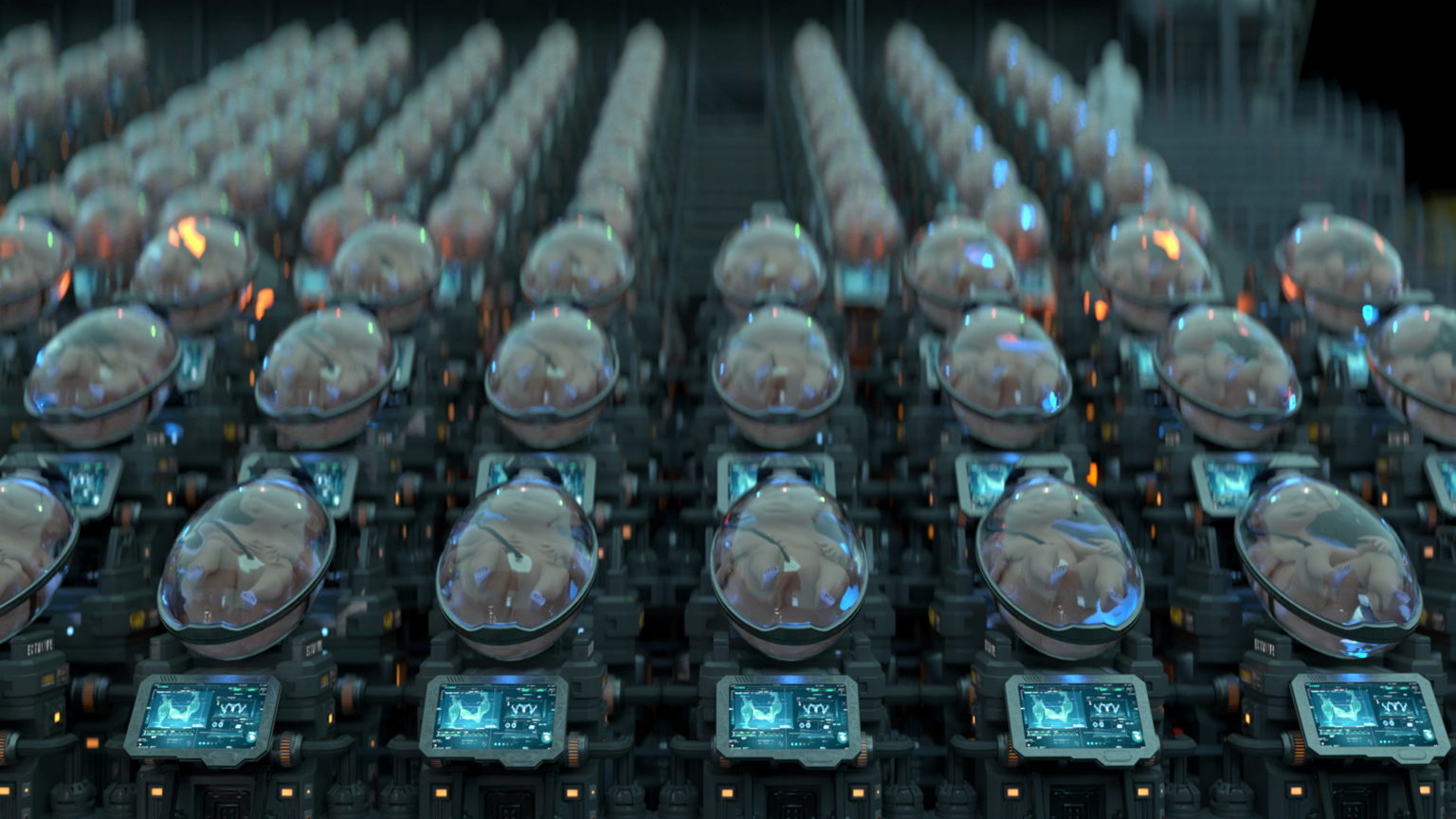

A group of scientists in Berlin, Germany say they are close to developing the world’s first artificial womb facility that grows babies outside of the human body. Parents would be able to watch their baby develop on a remote app and choose their child’s physical characteristics from a menu. The project, known as EctoLife, would be able to create 30,000 babies a year using a ground-breaking approach developed by researcher Hashem Al-Ghaili.
The technology can be used to genetically modify the embryo before it is implanted in the artificial womb. Parents can use the model to select the child’s eye and hair color, height, strength, and intelligence. It can also be used to weed out inherited genetic diseases.
Al-Ghaili says it’s not just about creating designer babies. The machine can also serve as an alternative for women who have had their uterus physically removed due to cancer and other health complications. It would also reduce the risk of pregnancy complications by simplifying the birthing process.
“Introducing EctoLife, the world’s first artificial womb facility, which is powered entirely by renewable energy,” Al-Ghaili announced in a statement. “According to the World Health Organization, around 300,000 women die from pregnancy complications. EctoLife artificial womb is designed to alleviate human suffering and reduce the chances of C-sections. With EctoLife, premature births and C-sections will be a thing of the past.”
Al-Ghaili said the technology is ready to go but ethical concerns are holding the project back. It may be several years before it ever gets off the ground.
“Every single feature mentioned in the concept is 100% science-based and has already been achieved by scientists and engineers. The only thing left is building a prototype by combining all the features into a single device,” he explained.
“In terms of timeframe, it really depends on the ethical guidelines. Right now, research on human embryos is not allowed beyond 14 days. After 14 days, embryos must be destroyed due to ethical concerns. If these ethical restrictions are relaxed, I give it 10 to 15 years before EctoLife becomes widely used everywhere. Add to that five years of public awareness and education to help people become more receptive to the technology.”
The facility currently contains 75 equipped labs, each capable of holding up to 400 growth pods, or artificial wombs. Every pod is designed to replicate the conditions inside the mother’s uterus.
They also come with monitors that display information about the baby’s development in real-time, which is also accessible via a mobile phone app.
“EctoLife allows your baby to develop in an infection-free environment. The pods are made of materials that prevent germs from sticking to their surfaces. Every growth pod features sensors that can monitor your baby’s vital signs, including heartbeat, temperature, blood pressure, breathing rate and oxygen saturation,” Al-Ghaili added. “The artificial-intelligence-based system also monitors the physical features of your baby and reports any potential genetic abnormalities.”
Babies are known to absorb sound and even recognize human language from inside the womb, so the pods come with internal speakers that play words and music to the baby. Parents can create a library of music or upload recordings directly to their baby’s playlist.
“And if you want your baby to stand out and have a brighter future, our Elite Package offers you the opportunity to genetically engineer the embryo before implanting it into the artificial womb,” the site explained.
“Thanks to CRISPR-Cas 9 gene editing tool, you can edit any trait of your baby through a wide range of over 300 genes. By genetically engineering a set of genes, the Elite Package allows you to customize your baby’s eye color, hair color, skin tone, physical strength, height, and level of intelligence. It also allows you to fix any inherited genetic diseases that are part of your family history so that your baby and their offspring will live a healthy comfortable life free of genetic diseases.”
The babies receive nutrients through artificial umbilical cords. Each group of pods is connected to two central bioreactors. The first one sends nutrients and a special liquid fluid that acts as amniotic fluid to the artificial womb. The second one eliminates any waste the baby creates. The artificial intelligence program automatically adjusts the nutrients each child receives based on their developmental needs.
When the baby is fully developed, the baby is born with the push of a button.
“EctoLife provides you a safe, pain-free alternative that helps you deliver your baby without stress. The delivery process is smooth, convenient, and can be done with just a push of a button,” the company said. “After discharging the amniotic fluid from the artificial womb, you will be able to easily remove your baby from the growth pod. Everything is perfectly designed so you and your partner can enjoy the delivery process.”
When we discuss students, we always mention their qualities. Those qualities show what they are…
If you or someone you know is juggling mental health issues alongside substance abuse, understanding…
For the last couple of weeks, the Israel-Hamas conflict has taken over the news cycle.…
Our eyes are invaluable, serving as our windows to the world. The ability to see…
Undoubtedly, one of the most demanding and challenging professions is nursing. Nurses work long hours in…
Echocardiography, or echo for short, is a key diagnostic test used by cardiologists to assess…